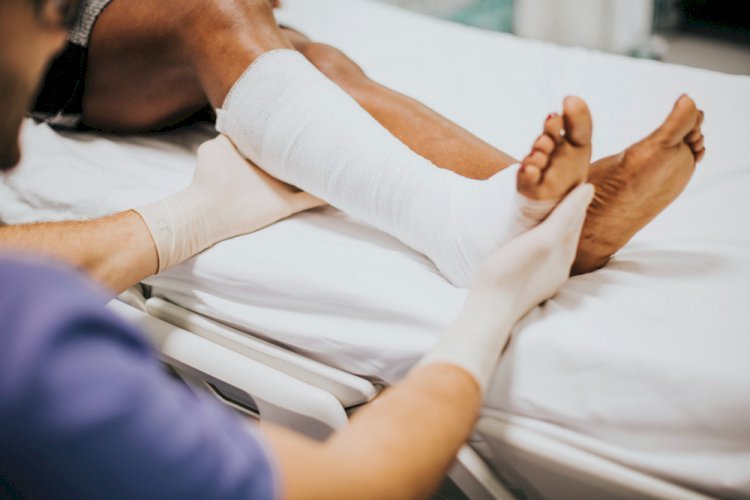The Link Between Diabetes and Chronic Wound Development

Living with diabetes requires constant vigilance over blood sugar levels, diet, and overall health. However, one lesser-known but serious complication that diabetics frequently face is chronic wound development. These are wounds that fail to heal within the expected timeframe—often remaining open and susceptible to infection for weeks or even months. Understanding the causes and symptoms of chronic wounds is especially important for individuals with diabetes, as they are significantly more likely to develop these persistent and often dangerous skin injuries.
Chronic wounds don't just affect comfort and mobility; they pose a major risk for severe infections, amputations, and even mortality if not managed properly. This blog explores the connection between diabetes and chronic wounds, why they form, and what proactive steps can be taken to prevent and treat them effectively.
Understanding Chronic Wounds
Chronic wounds are defined as those that do not progress through the normal stages of healing in an orderly and timely manner. A typical wound undergoes four stages of healing: hemostasis, inflammation, proliferation, and remodeling. When this process is disrupted, the wound may become "stuck," often lingering in the inflammatory stage. This is particularly common in people with diabetes, where poor circulation, nerve damage, and weakened immune responses all work against the body’s ability to heal.
Common Types of Chronic Wounds in Diabetics
- Diabetic foot ulcers
- Venous stasis ulcers
- Arterial ulcers
- Pressure ulcers (bedsores)
Among these, diabetic foot ulcers are the most prevalent. Studies suggest that up to 25% of diabetics will develop a foot ulcer at some point in their lives.
How Diabetes Impacts Wound Healing
Diabetes affects nearly every system in the body, and several of its complications directly impair wound healing. Here's how:
-
Poor Circulation (Peripheral Arterial Disease)
High blood glucose levels can lead to narrowed or hardened arteries, reducing blood flow to the extremities. Blood delivers oxygen and nutrients necessary for healing. When circulation is compromised, wounds receive fewer of these essential elements, significantly slowing recovery.
-
Neuropathy (Nerve Damage)
Diabetic neuropathy dulls or eliminates the sensation of pain in the affected areas—usually the feet and lower legs. As a result, a person may not even realize they have a wound or sore, allowing it to worsen before it's detected.
-
Immune System Suppression
Diabetes weakens the immune system’s response, making it harder to fight off infections. Chronic wounds are frequently colonized by bacteria, and without a robust immune defense, infections can become severe or systemic.
-
Increased Inflammation
High glucose levels can cause systemic inflammation, which disrupts the normal healing process. Chronic wounds often remain stuck in this phase, with excessive white blood cells and cytokines causing damage instead of healing.
-
Thickened Skin and Callus Formation
People with diabetes often develop thickened skin or calluses, especially on the feet. These areas are more prone to cracking, which can allow bacteria to enter and form ulcers.
Risk Factors That Exacerbate Chronic Wound Development in Diabetics
While diabetes itself is a significant risk factor, several other variables can increase the likelihood of developing chronic wounds:
- Poorly controlled blood sugar levels
- Smoking
- Obesity
- Sedentary lifestyle
- Advanced age
- History of previous ulcers or amputations
- Kidney or heart disease
Managing these risk factors is key to both preventing and controlling wound-related complications.
Symptoms to Watch For
Identifying a chronic wound early can mean the difference between healing and major medical intervention. Here are some warning signs:
- A sore that doesn’t heal within 2–4 weeks
- Redness or swelling that worsens over time
- Drainage or pus from the wound
- Blackened tissue or necrosis
- Increasing pain or sensitivity
- Unpleasant odor
- Fever or chills (a sign of systemic infection)
For diabetics, particularly those with neuropathy, regular foot inspections are critical—even small changes in skin texture, color, or temperature should be noted and evaluated by a healthcare provider.
Prevention Strategies for Chronic Wounds in Diabetics
An ounce of prevention truly is worth a pound of cure when it comes to wound care. Here are proactive steps diabetics can take to reduce their risk:
-
Maintain Healthy Blood Glucose Levels
Tightly controlling blood sugar is essential for reducing inflammation, promoting immune function, and improving circulation. Regular monitoring, appropriate medication use, and a balanced diet are all key strategies.
-
Practice Excellent Foot Care
- Wash feet daily and dry thoroughly
- Moisturize to prevent cracks, but avoid lotion between the toes
- Trim toenails carefully
- Wear well-fitting shoes and avoid walking barefoot
- Inspect feet daily for blisters, cuts, or color changes
-
Manage Underlying Health Conditions
Conditions like high blood pressure and high cholesterol can further impede circulation. Work with your healthcare provider to manage these effectively.
-
Stop Smoking
Smoking constricts blood vessels and decreases oxygen levels in the bloodstream, further complicating wound healing. Quitting significantly improves circulation and immune function.
-
Regular Medical Checkups
Frequent foot exams and full-body checkups can help detect problems before they escalate. Podiatrists, endocrinologists, and wound care specialists should be part of a diabetic’s care team.
Treatment Options for Chronic Wounds
When chronic wounds do occur, treatment should begin promptly. An individualized approach, often involving a multidisciplinary team, yields the best outcomes.
-
Debridement
This involves the removal of dead or infected tissue to promote healthy healing. It can be done surgically or through enzymatic or autolytic methods.
-
Infection Control
Topical and oral antibiotics may be necessary. Wound cultures often guide the selection of the most effective medication.
-
Advanced Dressings
Moisture-retentive dressings like hydrocolloid, alginate, or foam dressings can accelerate healing by maintaining an optimal wound environment.
-
Offloading Techniques
In foot ulcers, reducing pressure on the affected area is vital. Total contact casts, specialized footwear, or custom orthotics may be used.
-
Hyperbaric Oxygen Therapy
This therapy increases oxygen supply to the wound area by having the patient breathe pure oxygen in a pressurized room. It can be effective for difficult-to-heal diabetic ulcers.
-
Growth Factor Therapy and Skin Substitutes
Biologic treatments like platelet-derived growth factor or bioengineered skin substitutes can stimulate new tissue growth.
Psychological and Emotional Impact
Chronic wounds aren't just a physical problem. They can significantly affect a person's mental health, leading to anxiety, depression, and social isolation. The prolonged nature of the condition, combined with pain and mobility limitations, can wear on emotional resilience.
Support groups, mental health counseling, and patient education are important components of holistic care. Addressing the emotional aspect of chronic wound management can improve outcomes and enhance quality of life.
When to Seek Professional Help
Any wound that doesn’t show signs of healing within two weeks—or worsens over time—requires immediate professional evaluation. Don’t wait for symptoms like drainage or odor to appear before acting. In diabetics, even a small blister can become a limb-threatening ulcer if neglected.
Wound care specialists can provide thorough evaluations, advanced therapies, and tailored care plans that go far beyond what is possible with home remedies or standard first aid.
Final Thoughts
The link between diabetes and chronic wound development is strong and well-documented, but it doesn’t have to be a life sentence. With the right care, lifestyle changes, and proactive monitoring, many diabetic individuals can prevent chronic wounds or manage them successfully if they do occur. From identifying the causes and symptoms of chronic wounds early on to seeking prompt treatment, awareness and action are your best allies in the fight against this serious complication.
If you or a loved one are struggling with a persistent wound, don’t delay care. Trust your healing to experts at a Top-rated Wound Care Center nearby, where advanced technology, skilled clinicians, and compassionate support can help you get back on your feet—literally and figuratively.
What's Your Reaction?













